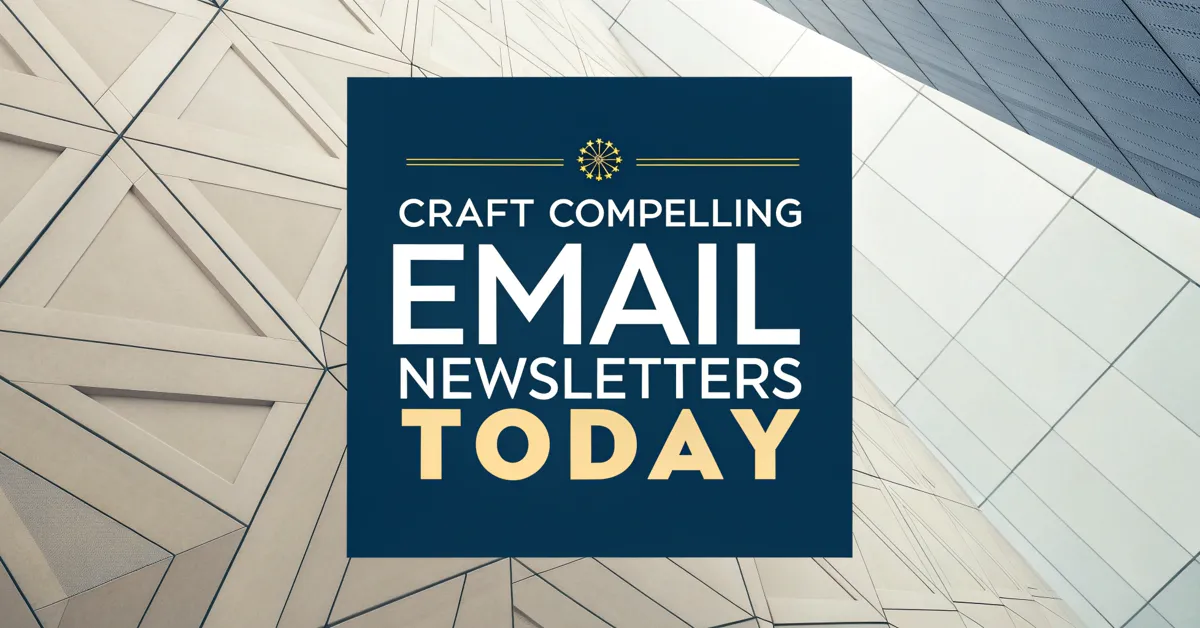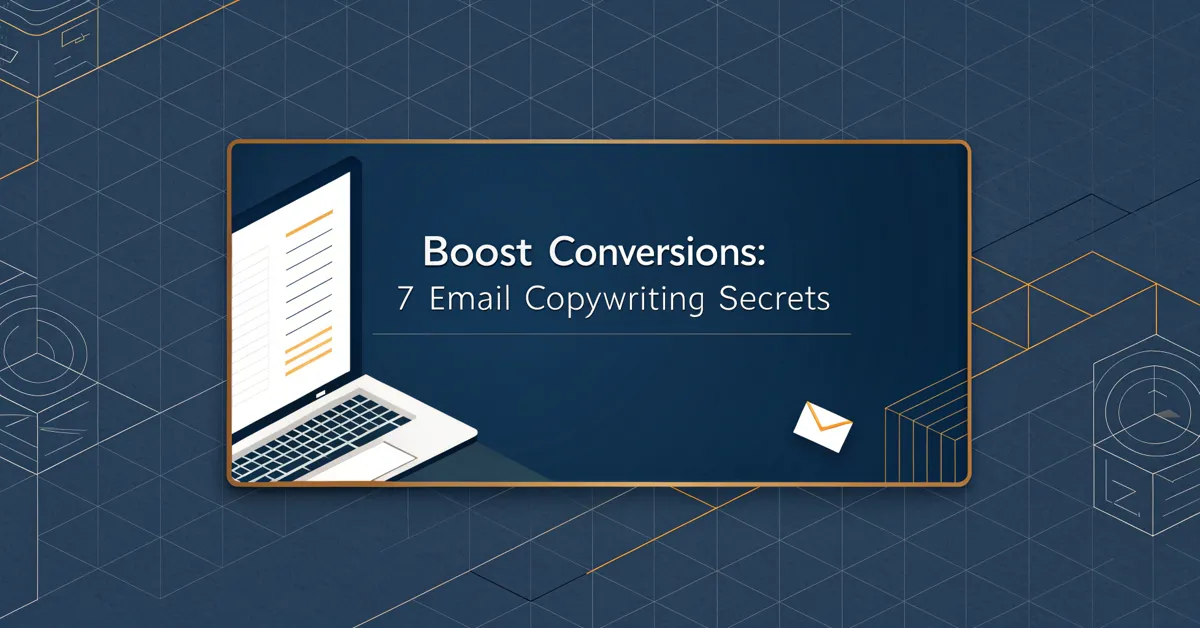Are your email open rates as flat as a week-old soda? It’s a pain point many copywriters know too well. You slave over your email copy, crafting a message you know your readers will love, only to see your open rates fall short. It feels like you’re shouting into the void, doesn’t it? Don’t worry, it’s not you; it might be your subject lines. The often-underestimated gatekeeper to your email marketing success.
Many believe the email copy itself is the end all, be all, the star of the show, the key, the thing… but they miss out on a major point: your subject line is the first, often only, impression your reader has of your email. If it fails to grab attention, the finest copy on earth will never be read. This article will show you the reasons why you might be in this rut. We’ll unpack some key problems and give you tools to fix them, no fluff, just straight facts.
Why Your Subject Lines Aren’t Working: A Diagnostic Approach
So, your subject lines aren’t pulling their weight, what is going on? It’s time to dive deep and look at the facts. Often the problem isn’t just bad writing; it can be one, or a mix of, different factors. Here are some of the most common culprits:
- Bland Language: Your subject line lacks punch. It fails to spark interest, or any emotion. It’s just there, quiet, beige, easy to overlook. It doesn’t make a reader feel they might miss out on something great.
- Too Long: Readers often scan email on their phones, if the subject line is too long, it gets cut off. The core message could be hidden or lost, which is a big turn off.
- Misleading: You promise one thing in the subject line, but you don’t deliver in the email. This can harm your sender reputation, and break any trust. No one likes a fake.
- Lack of Personalization: You’re sending the same subject line to everyone. This comes off as lazy and can feel like spam. You’re just another generic email in a sea of many.
- No Sense of Urgency: You’re not giving the reader any reason to open right away. It feels like they can open this email next week, and nothing will change. There’s no fear of missing out (FOMO).
- Overuse of Words: Certain words can trigger spam filters, which means the email may never make it to the inbox. This is a simple, yet common, mistake.
- Not Testing: You don’t check different subject lines to see what works best. You’re just guessing, not using data. This makes it much harder to see what’s working, and what needs to change.
- Ignoring Your Audience: Your subject line is not in sync with what your audience cares about. This is a big no no. It makes them wonder why they’re on your list in the first place.
Let’s dig into these issues, and give you easy and direct ways to boost your subject lines.
The Power of Specificity: Avoiding Bland Language
Bland language is the death of good email subject lines. It’s like serving plain toast every day—it’s not terrible but does nothing to excite. The cure is simple: be specific. The more clear and to the point you are, the more likely the reader will find the subject relevant to them.
Why Bland Doesn’t Work
Bland language often uses general words that do not give much meaning. Words like “update,” “news,” or “information,” while common, lack punch. They fail to stir curiosity or create a sense of urgency. Let’s be honest; most people don’t jump at the idea of “news.” They want to know if there’s something special or helpful in the email.
Examples of Bland vs. Specific
Here’s a direct comparison:
- Bland: “Update on Our New Service”
- Specific: “New Tool: Boost Your Output by 20% in 5 Days”
See the change? The bland version is flat; it tells you nothing. The specific one highlights a key benefit and uses numbers to catch the eye.
How To Be Specific
- Use Numbers: Numbers draw the eye and show clear value. Like “7 Ways To…” or “Save 15% Now.” Use them to create an impact.
- Add a Clear Benefit: Don’t just say what the email is about, say why the reader should care. What will they gain by opening it?
- Use Strong Verbs: Words like “unlock,” “discover,” or “transform” are much better than “get” or “see.” They add more punch and get your point across faster.
- Be Clear and Direct: Don’t overthink it; tell the reader what the email is about. Avoid long words. It’s all about being clear, direct, and fast.
By using clear details, you can change flat subject lines into ones that grab attention. It’s the key to getting readers to open your emails.
The Problem With Long Subject Lines: Less Is More
Ever had a subject line cut off in your inbox? It’s frustrating, right? This is a common issue with overly long subject lines. It can make your emails look sloppy and hide the core message. Let’s keep it clear and quick.
The Impact of Length
Long subject lines are often cut off on mobile screens. This can hide important bits of the email, like a call to action or a key value. It makes your email feel incomplete and can turn off readers. Plus, long subject lines can also be hard to scan quickly, making them easy to skip over. The rule is: if it’s hard to read, it won’t be read.
Ideal Length for Subject Lines
Data shows that subject lines of about 40-50 characters get the best open rates. This is often enough space to share your main point. This keeps it short, sweet, and gets the message across fast.
How to Trim Your Subject Lines
- Use Short Words: Pick words with few syllables. It helps keep the subject line short, without missing out on key points.
- Get to the Point: Cut the fluff. Every word should add value and be necessary. If a word is not needed, cut it.
- Put Key Points First: Keep the most important words at the front of the subject line, so that they can be read right away. Readers often scan the start of the subject line, so make sure your message is placed correctly.
- Use Numbers and Symbols: Numbers and symbols can help you share key ideas in few characters. Like using “%” instead of “percent,” or “#” instead of “number.”
Keep your subject lines clear and short. It helps make them easy to see and understand, even on small screens. Less is more.
The Trust Issue: Avoid Misleading Subject Lines
Clickbait subject lines are bad news. They may get you an open, but they will hurt you in the long run. The core of good email marketing is trust. Being dishonest with your subject line will kill that trust.
Why Misleading Subject Lines Are Bad
Misleading subject lines promise one thing but do not deliver it in the email. This leaves the reader feeling tricked and cheated. They may not open another email from you. It damages the connection you have with your subscribers. Plus, if enough people mark you as spam, your emails may stop making it to the inbox altogether. So, being straight and honest is very important.
Examples of Misleading Subject Lines
- Misleading: “You Won a Free Trip!” (Email says you could win a trip)
- Misleading: “Urgent: Your Account is at Risk” (Email talks about updates)
These tricks may get you a quick open, but they will not help you with long-term gains. They harm your sender’s reputation. It creates a loss of trust.
How to Be Honest and Direct
- Keep it Real: Make sure the subject line clearly reflects what is in the email. Don’t promise anything that the email does not back up.
- Focus on Value: Talk about the real gain the reader will get from the email. It is better to gain a few key clicks, than many that will not last.
- Stay Away From Clickbait: Be honest, clear, and direct. Avoid using words or phrases that are meant to trick readers.
- Always Deliver: If your subject line says you will provide a special offer, be sure it’s in the email. Never say one thing, and do the other.
Being honest can lead to a better relationship with your audience. It will make them more likely to open and read your emails again and again.
The Human Touch: Personalization Done Right
In the age of mass email, personalization is a key to standing out. It makes your emails feel less like junk mail and more like a one-on-one talk. When done right, this can improve open rates.
Why Personalization Matters
Generic subject lines can feel cold and distant. They make readers feel like you don’t see them as more than just an email address. Personalization can help break this wall. When an email feels like it’s meant just for them, it makes them more likely to open and engage.
How to Personalize Subject Lines
- Use the Reader’s Name: This is a quick and simple way to add a personal touch. It’s a basic way, but it is very effective.
- Targeted Content: Segment your email list based on what they’ve shown interest in before. That way, you can send relevant emails.
- Talk About Their Past Actions: Use data to make subject lines that talk about past sales, or past behavior. This can really make your email stand out.
- Use Location Details: If you have the data, try using details about where they are located, or their local city.
Examples of Personalization
- Generic: “Our New Products Are Here”
- Personalized: “Hey [Name], Check out these products you loved last week”
The personalized version feels warm. It talks to the reader directly. The bland one is like a bulk ad.
Key Points to Keep in Mind
- Don’t Go Too Far: Personalization can go bad if it feels too forced or creepy. Use the reader’s name, and other key data, but don’t go too deep.
- Data Use: Always be ethical and clear about how you’re using their data. The reader should know you value their privacy.
Personalization is a great way to make your emails feel more human. It builds trust and can boost your open rates. It’s a fine art, so do not over do it.
The Clock Is Ticking: Using Urgency Wisely
Urgency is a strong emotion. When used right, it can help you drive readers to open your emails right away. You can do this by making them feel that they may miss out on a deal or offer if they do not act fast.
How Urgency Works
Urgency makes readers feel that if they do not act fast, they may miss out on a limited time deal or offer. If there is no push to act, they may leave the email and never open it. You need to give the reader a reason to open your email now, not next week.
Ways to Add Urgency
- Time Limited Deals: Use clear time limits, like “24 Hours Only,” or “Sale Ends Tonight.” This gives a real reason to act quickly.
- Limited Stock: If items are low, use phrases like “While Supplies Last,” or “Almost Sold Out.” It can make the reader fear they might miss out.
- Exclusive Access: Make the reader feel like the email is just for them, use lines such as “Members Only” or “Early Access.”
- Use Strong Words: Terms like “urgent,” “last chance,” or “now,” can push readers to open your email quickly.
Examples of Urgency
- No Urgency: “Check Out Our New Items”
- Urgency: “Last Chance: New Items 20% Off For 24 Hours!”
The second example is much more direct. It adds pressure. It makes the reader feel they should act fast.
Key Points to Keep in Mind
- Avoid Fake Urgency: Only use urgency when it is real. If a sale runs for months, don’t make it sound like it ends in a day.
- Use Urgency Wisely: Overuse can make your emails sound spammy. Pick times to use this wisely, or your reader may stop feeling urgency.
Urgency can be a great tool to drive action. But it should be used well and honestly. If your readers feel you are always in “urgent” mode, they will not trust it anymore.
Spam Filters: Avoiding Triggers and Landing in the Inbox
It’s sad when you slave over an email only for it to get stuck in the spam folder. This is often due to the subject lines and certain words that trigger spam filters. You can avoid this by being aware of these triggers and steering clear of them.
Common Spam Triggers
Some words and phrases can sound like spam. Here are some of the most common ones:
- Words Related to Money: “Free,” “cash,” “money,” “cheap.”
- Words Related to Pressure: “Urgent,” “act now,” “limited time.”
- Words That Are Too Generic: “Hello,” “you,” “click here.”
- Using All Caps: This can make your email sound like it’s shouting.
- Too Many Exclamation Points: It can seem overly excited and untrustworthy.
If you use these, your email may not reach the inbox. Your hard work may go to waste.
How to Avoid Spam Triggers
- Use Real Language: Avoid buzzwords and hype. Talk to your readers as you would a real person.
- Use Synonyms: Instead of “free,” use “complimentary” or “bonus.” It still gives the point across, without the same risk of spam filters.
- Keep it Clear: Don’t overdo it on exclamation points or words written in all caps.
- Test Your Emails: Before you send, try sending your email to a test email address. See if it lands in spam.
Examples of Spam vs. Clean
- Spam Trigger: “Get FREE Cash Now! ACT NOW!”
- Clean: “Limited Time Offer: A Special Deal Just for You”
The clean version uses real, human words, without being too much. It gets to the point, without triggering spam filters.
Key Points to Keep in Mind
- Know Your Audience: Know what they respond to, and make sure the words feel like real-talk. If your audience likes a certain style, keep it consistent.
- Always Test: Before sending out bulk emails, always do a test. It will give you a quick check on how the email is doing.
By watching what words you use, you can better the chance that your emails will get read.
The Importance of Testing: A/B Testing and Data-Driven Decisions
Ever wondered what subject line might work the best? The only real way to find out is to test them. A/B testing is when you send out different subject lines to a part of your email list. Then, you use data to find out which one is doing the best.
Why Testing Matters
Testing is not a guess game. It helps you learn what your readers really respond to, and makes your email list grow faster. You cannot say for sure if “this” subject line will get results, unless you test it. Data will show you the best path.
How to Run A/B Tests
- Pick What You’ll Test: Focus on one idea at a time. Pick a subject line to test out, or a key word. Test what you think will make the biggest difference.
- Divide Your List: Split your email list into two groups. Group A and Group B, at random. This will make sure your test is fair.
- Change Only One Thing: If you change more than one thing, it will be hard to know what is really causing the change in results. Make sure all else is the same, other than your main test subject.
- Track Your Results: Use your email service to keep track of the results. Watch how each group does, to see which subject line did best.
- Use Your Results: After you run a test, use the data to make smarter choices about future emails. You will then begin to see a clear pattern.
What to Test
- Subject Line Length: Test short subject lines against long ones to see how this changes open rates.
- Key Words: Try words to see which one is pulling in the best clicks.
- Urgency: Test subject lines with urgency against ones that are more neutral.
- Emoji: Some think emojis may be bad, some might think they’re good, test it out for yourself!
Examples of A/B Testing
- Group A: “Our Special Offer Is Here”
- Group B: “Limited Time Special Offer!”
After you send, watch the results to see what open rates were the best. It is the only real way to know.
Key Points to Keep in Mind
- Test Often: Make A/B testing a key part of your email marketing. Data and testing are a gift, and you should use it.
- Test Different Things: Don’t stick to testing the same things again and again. Get creative, try new things and see what results come back.
- Focus on Your Goals: Make sure you’re not just testing for the sake of it. Focus on things that will meet your goals.
A/B testing will show you what works, what does not, and what should be avoided. You will start seeing how your readers respond to what you write.
Understanding Your Audience: Knowing What They Want
The most key part of creating a good email is knowing your audience. If your subject lines don’t fit with what they want, they will not open them. You can fix this by learning about what makes your subscribers tick.
Why Audience Understanding Is Key
If you don’t know who your reader is, your subject lines will not hit home. It will be like shooting in the dark, hoping to hit a target. If your email message is not what they wanted, they will not click it. If your emails are not interesting, they will leave.
How to Learn About Your Audience
- Look at Your Data: Use your email analytics to learn what your readers click on, or do not click. Data will tell you a lot about your list.
- Ask Them: Use polls and surveys to learn what your readers like. Just by asking questions, you can get valuable details.
- Watch Social Media: See what they talk about in comments and social groups. It can help you know what their key interests are.
- Look at Your Team: Ask sales and customer service for ideas on what your readers might be looking for. They know your list very well.
Matching Subject Lines to Audience
If your data shows that a key part of your list loves a good deal, try using words that show it. If another key list loves tips and tricks, use words that show them that your email is full of them.
By using what you learn, you can make subject lines that fit with each group. You can make them feel seen and heard. It is like talking directly to them.
Examples of Audience-Focused Subject Lines
- Generic: “Our New Items are Here”
- Audience-Focused (Deals): “Savings: New Items 30% Off”
- Audience-Focused (Tips): “Top 10 Tips to Boost Your Output Now”
The last two examples feel like they’re made just for them. The generic one feels cold and distant.
Key Points to Keep in Mind
- Keep it Fresh: Always keep learning about your audience. As they change, so should your email plan.
- Segment Well: Divide your list up into groups to send them key emails that will help them. The more clear you are with your groups, the better the results.
Knowing who your readers are is the first step to making emails that they love. It’s key to long-term gains.
The Subject Line is a Key Part of the Whole
Your subject line is the key to unlocking the power of your email. It is like the cover of a book. Or the title of a news article. If it is not good, people will skip it. It does not matter how good your email is, if it does not get seen.
By using data and testing to guide your plan, and the tips in this article, you can fix broken subject lines. It’s not magic, it’s work. It’s clear that being specific, honest, and quick can be very important. Remember, personalization and urgency (done well) can drive action. And always be sure to watch for spam words and other triggers.
Most of all, it’s all about getting to know your audience. The more you do, the better your subject lines, the more people will click, and the higher your growth. Now that you have a solid plan, it’s time to go out there and start improving!





